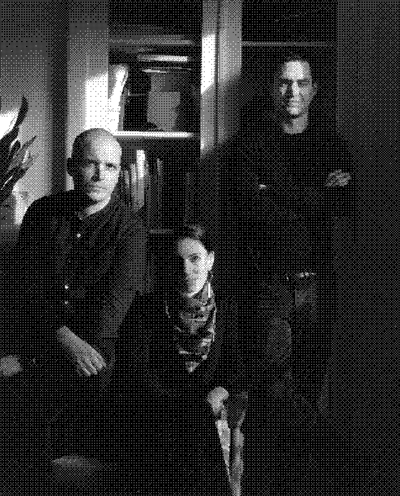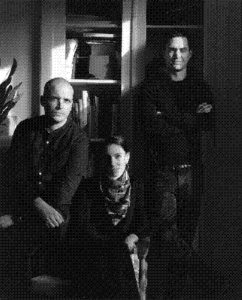References Development Strategy Advice Management Prospective Creativity Clients Communication Process Prospection Work culture Competition Presentation Design Typography Agents Advertising Finance Architecture Investment Education Ai Cgi Trend Fashion Recruitment Graphic design Nft Music Marketing Photography Sound design Research Blockchain Sustainability Crypto Technology Metaverse
18 excerpts on the topic “Design”
[…] And on a professional level, a few years ago I read The Politics of Design, a very interesting book for anyone who is starting in the field. Just to be much more self aware of what we produce, the fact that everything we do has a consequence, being more critical about our influence in the world. […]
[…] Research is fundamental to our studio. I find it strange when design studios focus solely on output without meaningful input. As design becomes increasingly automated, developing a distinct studio posture is more crucial than ever—one shaped by intent rather than dictated by external forces. […]
[…] There’s a very technical side to design concerned with improving functionality or manufacturing, and we are also very interested in that and see it as a major source of inspiration. But I really like the more emotional and intellectual level of design, which plays a huge role in one’s perception of a work. […]
[…] It was a pragmatic decision to reduce the collection to products that only consist of steel or aluminum—we just wanted to understand metal better. One or two years ago, we also started to work with wood. But only recently, after the years that we’ve spent understanding metal so well, have we felt confident enough to get into wood. […]
[…] I’m always fascinated, though, by how aligned the value system is and how clearly people see our intention through the products or exhibitions we create. It seems to me that there’s no need to explain it, because there’s this invisible code in the product that gets decoded by the viewer.(…) It’s like a hidden language. Most of the time, when I have the opportunity to meet a customer, there’s nothing to explain. They already know our perspective because they have understood it from our work, which is super fascinating. […]
[…] Drawing is my language. Le Corbusier said, “I would rather draw than talk.” This is clearly the case for me. But you can be fooled by a drawing. […]
[…] The major evolution coming, I think, and I would be the first to invest in it, is 3D printing. It’s amazing, we already use it a lot in the office. I think everyone will have 3D printing at home in the future. You’ll buy your files and make your furniture with them. We’re looking to buy a 3D machine for printing armchairs made of recycled plastic. That’s your production tool. It’s total freedom. You launch, you do the 3D, you print, you sell. […]
[…] What is more painful is that I feel that design is going through what fashion went through in the 1930s. There are lots of studios popping up: it’s the new El Dorado. And you see a lot of people coming onto the market who don’t do it very well, which kind of hurts our practice, I think. […]
[…] In the design landscape, we are quite particular as a studio because we can merge both sides. We have quite an ambiguous practice and we like that because we are not only preaching, we are also dealing with certain issues, and we are also trying, as best as we can, to bring some narrative from our research into the more commercial projects. […]
[…] Nowadays, all the students are really interested in material exploration, understanding where the materials come from, engaging with the community that produces that material, understanding the location and the context where the material grows, if it grows. And understanding the line of production and consumption of that object, and ultimately its life after consumption, so there is a better understanding of the ecosystem surrounding the objects. […]
[…] they need to think about what design means today. We really need to work with a much more expansive understanding of the discipline that is not only about designing the product. There are a few companies and thousands of designers, so there’s not space for everybody. You need to find your own way of working. […]
[…] SE
Back in Munich, when we were walking around town, there was this little Dieter Rams store, the bookshelf from Dieter Rams. He is an icon, an absolute GOAT. He didn’t have the tools we have. It was quite something to say “No, that radio player should have just one knob, and that’s how it should be.” Can you imagine how many fights he must have had to go through to actually get that passed? He didn’t have the same resources available like we do. […]
Back in Munich, when we were walking around town, there was this little Dieter Rams store, the bookshelf from Dieter Rams. He is an icon, an absolute GOAT. He didn’t have the tools we have. It was quite something to say “No, that radio player should have just one knob, and that’s how it should be.” Can you imagine how many fights he must have had to go through to actually get that passed? He didn’t have the same resources available like we do. […]
[…] I realized that I couldn’t become a designer in a Japanese design school. I felt the country was lacking something in terms of ergonomic and commercial design, so I decided to travel to Scandinavia that winter. For some reason, I was fascinated by the architecture and design of Aalto and Asplund (…) I realized that Aalto wasn’t designed for commercial purposes, but for creating a richer everyday life, and I wanted to be that way too. […]
[…] Since the nationalities and regions are diverse, there is no bias in ideas and policies, and it is a wonderful team that can make proposals from an international perspective. […]
[…] Design needs to understand the land and create the culture it needs. However, design is not possible unless the designer has a relationship with the place. […]
[…] I’m not interested in commercial projects created by trends. I am interested in projects and places that create a universal culture. This design philosophy is the same for restaurants and hotels. […]
[…] making a universal design is sustainability. Creating things that have been created over long periods, spaces and things that will not fade over time. I think that is very important from the perspective of sustainability. […]
[…] Six N. Five Objects was meant to turn these projects into objects: a chair, a table, a sculpture, or whatever it was. It was a bit frustrating because it’s not my area of expertise and we had to start from scratch. There were a lot of limitations which was expected, but my creative process was always so tied to the digital side of things. When suddenly you find yourself in another realm, everything feels quite different. You have to wait two or three months to see a prototype, then make changes that take another two months… There are limitations, things you can’t do or things that need to be adapted, but I eventually got sort of used to it. I’m still learning and yes, I would like to get more involved in that. […]

